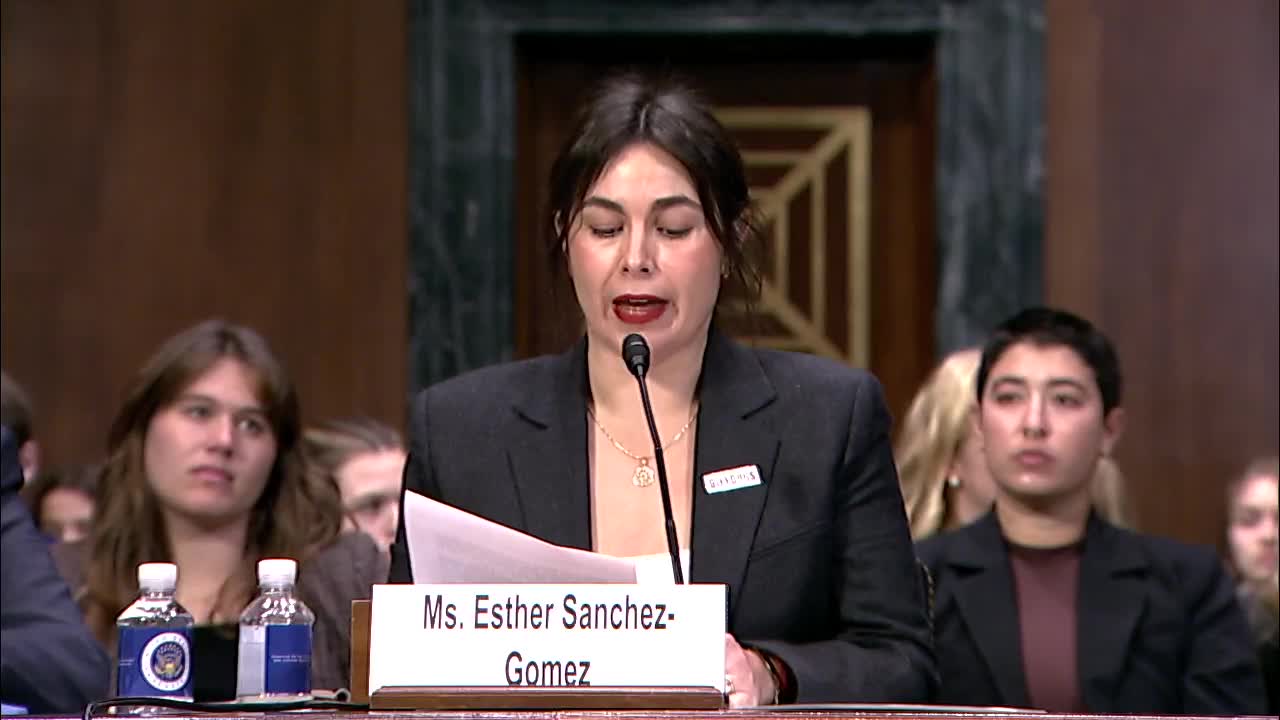Supreme Court decision reignites debate on bump stocks and gun violence
November 13, 2024 | Judiciary: Senate Committee, Standing Committees - House & Senate, Congressional Hearings Compilation
This article was created by AI summarizing key points discussed. AI makes mistakes, so for full details and context, please refer to the video of the full meeting. Please report any errors so we can fix them. Report an error »

In a recent Senate Judiciary Committee meeting, discussions centered on the urgent need for legislative action to address the rising prevalence of devices that enable automatic gunfire, particularly bump stocks and autosears. The meeting highlighted the tragic implications of gun violence in the United States, referencing the 2017 Las Vegas shooting, where the gunman utilized bump stocks to create a continuous firing effect, akin to machine gun fire.
Under the Trump administration, the Bureau of Alcohol, Tobacco, Firearms and Explosives (ATF) had amended regulations to classify bump stocks as machine guns, thus subjecting them to federal bans. However, a recent Supreme Court ruling in the case of Garland versus Cargill overturned this regulation, rendering bump stocks legal at the federal level once again, despite ongoing state regulations.
The committee also addressed the alarming rise of autosears—devices that convert handguns into automatic weapons. A recent incident in Philadelphia, where eight high school students were shot, underscored the dangers posed by these devices, which can be easily inserted into firearms. Although autosears are illegal under federal law, their availability has surged due to online marketplaces and advancements in 3D printing technology, with ATF reporting a staggering 5,170% increase in recovered autosears over the past decade.
The historical context of gun violence in America was also discussed, drawing parallels to the Prohibition era when Congress enacted the National Firearms Act of 1934 in response to rampant gun violence. Since then, Congress has made several attempts to regulate automatic firearms, including significant legislation in 1968 and 1986 aimed at curbing civilian ownership of newly manufactured machine guns.
The testimony emphasized that the current wave of violence, exacerbated by the misuse of bump stocks and autosears, can be mitigated through legislative action. The committee was urged to consider banning bump stocks and to provide the ATF with the necessary resources to enforce existing laws effectively. The overarching message was clear: the safety of communities, schools, and public gatherings is at stake, and decisive action is imperative to prevent further tragedies.
Under the Trump administration, the Bureau of Alcohol, Tobacco, Firearms and Explosives (ATF) had amended regulations to classify bump stocks as machine guns, thus subjecting them to federal bans. However, a recent Supreme Court ruling in the case of Garland versus Cargill overturned this regulation, rendering bump stocks legal at the federal level once again, despite ongoing state regulations.
The committee also addressed the alarming rise of autosears—devices that convert handguns into automatic weapons. A recent incident in Philadelphia, where eight high school students were shot, underscored the dangers posed by these devices, which can be easily inserted into firearms. Although autosears are illegal under federal law, their availability has surged due to online marketplaces and advancements in 3D printing technology, with ATF reporting a staggering 5,170% increase in recovered autosears over the past decade.
The historical context of gun violence in America was also discussed, drawing parallels to the Prohibition era when Congress enacted the National Firearms Act of 1934 in response to rampant gun violence. Since then, Congress has made several attempts to regulate automatic firearms, including significant legislation in 1968 and 1986 aimed at curbing civilian ownership of newly manufactured machine guns.
The testimony emphasized that the current wave of violence, exacerbated by the misuse of bump stocks and autosears, can be mitigated through legislative action. The committee was urged to consider banning bump stocks and to provide the ATF with the necessary resources to enforce existing laws effectively. The overarching message was clear: the safety of communities, schools, and public gatherings is at stake, and decisive action is imperative to prevent further tragedies.
View full meeting
This article is based on a recent meeting—watch the full video and explore the complete transcript for deeper insights into the discussion.
View full meeting